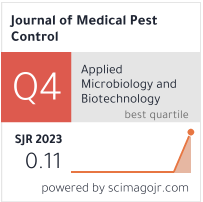Tideglusib Reduces kidney damage in renal ischemia –reperfusion injury through wnt activation in male rats
Abstract
Background: Renal ischemia-reperfusion injury (RIRI) is a serious complication associated with kidney surgery, transplantation, and conditions impairing renal perfusion. Its pathogenesis involves oxidative stress, inflammation, and cell death pathways. Developing effective therapeutic strategies requires targeting these mechanisms. This study evaluated the protective effect of Tideglusib, a selective glycogen synthase kinase 3β inhibitor that activates the Wnt/β-catenin signaling pathway, in an experimental rat model of RIRI. Rats were divided into six groups: sham, untreated RIRI control, vehicle groups for QS11 and Tideglusib, and treatment groups receiving QS11 or Tideglusib. Aim of study: The objective of this research was to evaluate the renoprotective effects of Tideglusib through the activation of the Wnt/β-catenin signaling pathway in a rat model exhibiting acute kidney injury induced by ischemia-reperfusion. Methodology: An experimental rat model of renal ischemia-reperfusion injury was established by clamping the renal pedicles for 30 minutes, followed by 90 minutes of reperfusion. Renal function was evaluated by measuring kidney injury molecule-1 (KIM-1). Apoptotic markers (Bax, Bcl-2), inflammatory mediators (TNF-α, IL-1, IL-6), and antioxidant proteins (Nrf2, HO-1) were quantified using ELISA. Result: The capacity of Tideglusib to enhance the wnt β-catenin signaling pathway has been demonstrated to substantially mitigate renal ischemia-reperfusion injury (RIRI) in comparison to the control cohort. Nevertheless, this pharmacological agent (Tideglusib ) demonstrated a protective role against apoptosis, or programmed cell death. When juxtaposed with the control group exhibiting RIRI, the sham group displayed reduced levels of Bax, a pro-apoptotic mediator and elevated Bcl2. Additionally, the Tideglusib-treated cohort presented lower concentrations of both Bax,NFkB and elevated Bcl2 in comparison to the control group with RIRI.
Full text:
PDFReferences
NAJAH R. HADI *, HAYDER MOHAMMED THYAB



